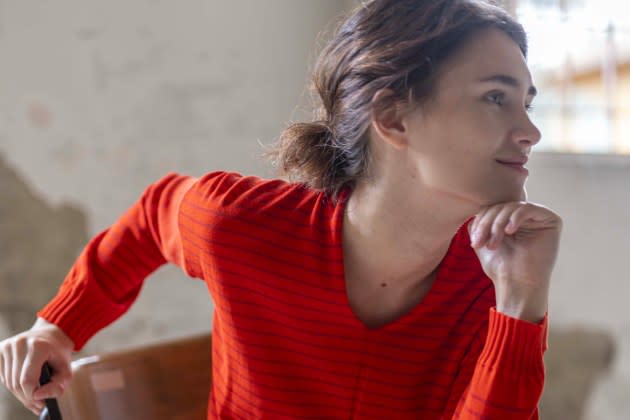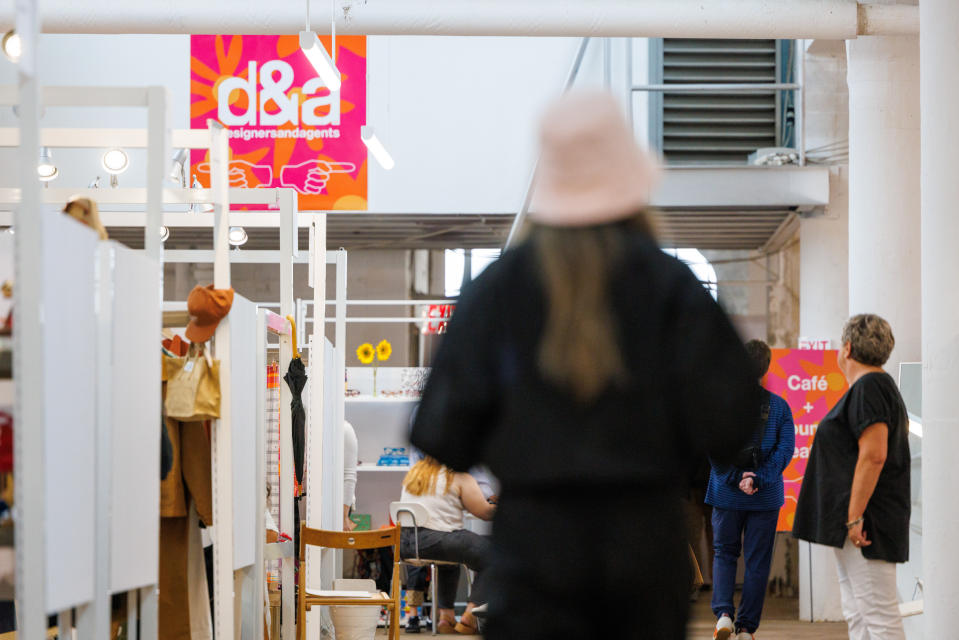Specialty Stores Stress Customer Service at Designers & Agents Trade Show

Instagram-driven business, coaxing discount-minded shoppers into full-price purchases and off-hours customer service are some of the ways that specialty stores are staying competitive and solvent.
Such tactics were shared by buyers during this month’s Designer & Agents trade show in New York. There were 207 brands on view compared to 162 last September, according to the show’s organizers. Grammar, M. Patmos, The Little Project, Soeur Paris, Lola Hate, Matte, Let & Her, Bonne Maison and Aubrey were among the vendors at the three-day show that wrapped up on Friday at The Starrett-Lehigh Building in New York. A few of the 41 newcomers included Jungmaven, Sabot Youyou, Beach Hare and Le Mont Saint Michel.
More from WWD
EXCLUSIVE: Rahul Mishra and Indian Retail Giant Reliance Detail Strategy for Joint Venture Brand
Coterie's Spring Offerings of Denim, Colorful Knits and Feminine Dresses Score High With Retailers
Heather Campbell, owner of the Columbia, S.C.-based The Blake, said, “The pie is always going to be the same size. It’s about how you pivot around different changes, based on what’s going on. Then you can maintain your same slice of the pie or carve out a little more.”
Not a traditional brick-and-mortar, The Blake tweaks store hours based on the season, trunk shows, and other events commitments. Much of that has been driven by Instagram-assisted business that took hold during the pandemic, as people from different generations began shopping online. Instagram can generate 60 to 65 percent of the store’s total sales, Campbell said. The flip side is Instagram makes her responsibilities 24/7 — developing clients, being a stylist and evaluating fit via DMs, which often leads to phone calls and Zoom meetings. But all those off-hours exchanges lead to understanding clients better and closer ties to them. “For small stores, that really eliminates having your inventories all over the place, having to track it down, and having returns coming in two, three or four weeks after the window,” Campbell said.

Campbell describes the abundance of discounting from major players as “completely out of control,” and said she believes that loyal shoppers are the ones who should be getting 10 percent off. Her average purchase is between $500 and $800, she said.
Like a few other retailers at the show, Campbell found in-store sales last summer waned a bit, but Instagram sales offset the decline in walk-in traffic. The Blake also held trunk shows in summer resort areas for the first time and pop-up events — a two-day event can be comparable to one week of in-store business, Campbell said.
She praised show resources like Love Binetti, Marian Paquette and Nue for protecting the retailers they sell to from rampant sales. Campbell said D+A’s emphasis on small brands — many of whom don’t have their own e-tail business and offer sustainable, small-batch options and are looking to grow with the stores they sell to — is part of the appeal of the show. At The Blake, consumers have moved on from block print dresses to easy, layering cotton blouses. Munich-based Susanne Bommer’s shapely silhouettes, especially in charcoal, emerald green, teal and deep amethyst are also popular.
Catering to customers is a priority for Jin Fillinger, owner of the Jinny boutique in Walnut Creek, Calif., where sales are between five and 10 percent ahead of last year. “It always comes down to the personalized service from clients who know you and trust your taste. They know when they come in, you will make their time efficient for them. You certainly can’t get that by shopping on Amazon, Shopbop or any of the other various sites. Even online chats with stylists is not the same as seeing someone face-to-face, getting to know someone and building that comfort level. Ninety-five percent of my business is all service,” she said, adding those relationships result in deeper sell-throughs.
Some of that uptick is from day-trippers from San Francisco (partially due to the blight in the city) and Sacramento, Fillinger said. Having been in business 18 years, she said that post-pandemic clients have increased their number of trips. Many are looking for packable, wrinkle-resistant, lightweight and machine-washable travel separates — light jackets, jersey tops and bottoms, long- and short-sleeve layering T-shirts, a signature evening piece like a black blazer, belt bags, sneakers, Teva-type sandals and other comfortable shoes. On average, shoppers spend $900 to $1,000, which is comparable to last year. New referrals have helped business and the fourth quarter is always Jin’s top season.
Having met up with seven buyers for dinner while in New York, Fillinger said nearly everyone felt “fairly upbeat about the economy, despite all the grumblings about the economy. Everyone is staying the course with what makes their business work. But these independent operators are so heavily involved with their businesses — they are in their stores and servicing their clients every day,” she said.
Store manager Emily Childress of the Seattle boutique Les Amis singled out Hannoh, Nicholson & Nicholson, Injiri and Maria La Rosa as key show resources. Modern clean menswear with a feminist touch is popular with the retailer’s fabric-conscious shoppers. Entirely natural cotton, linens and other long-lasting quality fabrics are in demand. Sales are ahead of last year by more than 10 percent, Childress said.
Amid Seattle’s compact retail community, Les Amis keeps a strong relationship with other storeowners. Although a few stores went out of business during COVID-19, Les Amis has maintained a loyal base of customers since it opened 26-plus years ago. The company has a site, but does not offer online sales in order to focus on the in-store experience. The social aspect of retail helps to get people in the door. Post-COVID-19, people are relishing beautiful things to admire and wear, after so many dressed-down years, Childress said.
Les Amis’ average purchase is about $800 — up compared to a year ago — and business has been steadily growing, she said. The store’s owner, Becky Buford, has always prioritized a wide price range from under $100 to $3,000 to $4,000. Handwritten receipts are an example of the personalized service, Childress said.
Always on the search at D+A for exciting, new designers, Bon boutique co-owner Cystal Flynt said that business is comparable to last year. One upside is how the 20-year-old retailer is sustaining online growth that was prompted by the pandemic shutdown. Interestingly, the Tucson, Ariz., store’s hours have been reduced, since the space is needed to shoot photography and to handle other tasks related to its e-commerce site.
As for what’s making consumers shop, Childress said one motivator is designers who are producing carefully and in a slow manner. People care about how things are made, where they are from and who the designer is that is making them. One example would be the Uruguay-based brand Ound that makes hand-knit sweaters using wool from local sheep. Other key show resources for Bond were Irupe, Hannoh and Maku. “There have been a lot of revelations about fast fashion, the exploitation of people and taking care of the planet,” Flynt said.
Best of WWD


